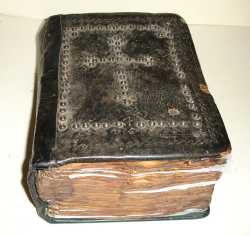ARMENIAN MANUSCRIPTS
 The Medieval Manuscripts ( hand written books ), in general, have a special place in the Armenian cultural heritage. They are not only rich in content as they contain historical, theological, Philosophical, literary, bibliographic dissimilar material, but also as works of art in their subjects, literary - writing style, miniature art, Khaz - Medieval music notes ( The Khaz is an Armenian form of the music notes/notta ), and as accurate documents about the location of the Literary centers, the people who created the manuscripts, the date of creation, and several, similar details about their contemporary events, a factor which makes them rich reference books, in this respect, every manuscript is a unique cultural monument.
The Medieval Manuscripts ( hand written books ), in general, have a special place in the Armenian cultural heritage. They are not only rich in content as they contain historical, theological, Philosophical, literary, bibliographic dissimilar material, but also as works of art in their subjects, literary - writing style, miniature art, Khaz - Medieval music notes ( The Khaz is an Armenian form of the music notes/notta ), and as accurate documents about the location of the Literary centers, the people who created the manuscripts, the date of creation, and several, similar details about their contemporary events, a factor which makes them rich reference books, in this respect, every manuscript is a unique cultural monument.
In spite of the various tests, throughout the centuries, 30 000 manuscripts have found their way to us. The largest collection of the Armenian manuscripts is housed at the Mesrop Mashtots Research Institute of Ancient Manuscripts Matenadaran, in Yerevan. This collection counts approximately, 13000 pieces of complete logs, and more than 2000 fragments. The Mkhitarist congregation in Venice is in posession of 4000, similarly, the The Armenian Patriarchate in Jerusalem ( the St. James Monastery/Sourp Hagop Vank ) is in posession of 4000, the Mkhitarist library in Vienna is in posession of approximately, 2000 logs, over 1000 manuscripts are in the Holy Etchmiadzine possession, similarly in the Sourp Amenaprgitch Vank - The Armenian monastery in Nor Tchougha/New Joulfa -Iran. A series of world famous Museums and Libraries around the world have Armenian manuscripts in their possessions, some, of which are: paris, London, Washington, St. Petersburg and more. In 1915, during the Armenian genocide, more than 10 000 manuscripts have been destroyed.
The materials on this website including all pictures, images, text materials, can be used for personal, educational and informational purposes, with credit to ArmenianArt.org.















 The Medieval Manuscripts ( hand written books ), in general, have a special place in the Armenian cultural heritage. They are not only rich in content as they contain historical, theological, Philosophical, literary, bibliographic dissimilar material, but also as works of art in their subjects, literary -
The Medieval Manuscripts ( hand written books ), in general, have a special place in the Armenian cultural heritage. They are not only rich in content as they contain historical, theological, Philosophical, literary, bibliographic dissimilar material, but also as works of art in their subjects, literary -